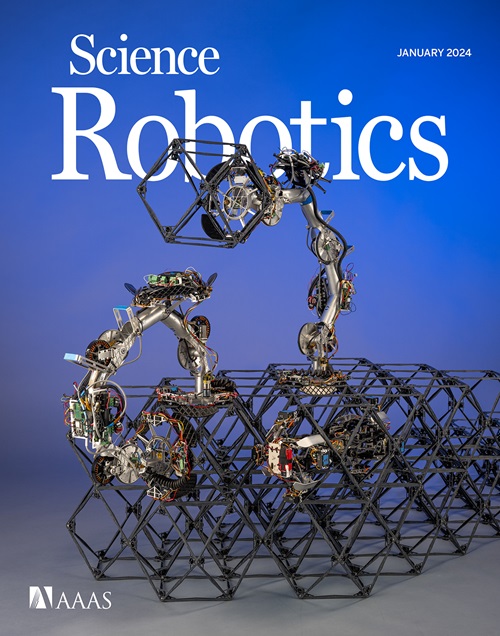Surgical embodied intelligence for generalized task autonomy in laparoscopic robot-assisted surgery.
IF 27.5
1区 计算机科学
Q1 ROBOTICS
引用次数: 0
Abstract
Surgical robots capable of autonomously performing various tasks could enhance efficiency and augment human productivity in addressing clinical needs. Although current solutions have automated specific actions within defined contexts, they are challenging to generalize across diverse environments in general surgery. Embodied intelligence enables general-purpose robot learning with applications for daily tasks, yet its application in the medical domain remains limited. We introduced an open-source surgical embodied intelligence simulator for an interactive environment to develop reinforcement learning methods for minimally invasive surgical robots. Using such embodied artificial intelligence, this study further addresses surgical task automation, enabling zero-shot transfer of simulation-trained policies to real-world scenarios. The proposed method encompasses visual parsing, a perceptual regressor, policy learning, and a visual servoing controller, forming a paradigm that combines the advantages of data-driven policy and classic controller. The visual parsing uses stereo depth estimation and image segmentation with a visual foundation model to handle complex scenes. Experiments demonstrated autonomy in seven game-based skill training tasks on the da Vinci Research Kit, with a proof-of-concept study on haptic-assisted skill training as a practical application. Moreover, we conducted automation of five surgical assistive tasks with the Sentire surgical system on ex vivo animal tissues with various scenes, object sizes, instrument types, and illuminations. The learned policies were also validated in a live-animal trial for three tasks in dynamic in vivo surgical environments. We hope this open-source infrastructure, coupled with a general-purpose learning paradigm, will inspire and facilitate future research on embodied intelligence toward autonomous surgical robots.腹腔镜机器人辅助手术中广义任务自主的手术具身智能。
能够自主执行各种任务的手术机器人可以提高效率,增加人类在解决临床需求方面的生产力。尽管目前的解决方案已经在定义的环境中实现了特定操作的自动化,但在普外科的不同环境中进行推广仍具有挑战性。具身智能使通用机器人学习应用于日常任务,但其在医疗领域的应用仍然有限。我们介绍了一个开源的外科嵌入式智能模拟器,用于交互式环境,以开发微创手术机器人的强化学习方法。利用这种人工智能,本研究进一步解决了手术任务自动化问题,实现了模拟训练策略到现实世界场景的零射击转移。提出的方法包括视觉解析、感知回归器、策略学习和视觉伺服控制器,形成了一个结合数据驱动策略和经典控制器优点的范例。视觉解析采用立体深度估计和图像分割,结合视觉基础模型处理复杂场景。实验证明了达芬奇研究工具包在七个基于游戏的技能训练任务中的自主性,并将触觉辅助技能训练作为实际应用的概念验证研究。此外,我们使用sen整个手术系统在不同场景、物体大小、仪器类型和照明的离体动物组织上进行了五项手术辅助任务的自动化。学习策略也在动态体内手术环境中的三个任务的活体动物试验中得到验证。我们希望这个开源的基础设施,加上一个通用的学习范式,将激发和促进未来对自主手术机器人的具身智能的研究。
本文章由计算机程序翻译,如有差异,请以英文原文为准。
求助全文
约1分钟内获得全文
求助全文
来源期刊

Science Robotics
Mathematics-Control and Optimization
CiteScore
30.60
自引率
2.80%
发文量
83
期刊介绍:
Science Robotics publishes original, peer-reviewed, science- or engineering-based research articles that advance the field of robotics. The journal also features editor-commissioned Reviews. An international team of academic editors holds Science Robotics articles to the same high-quality standard that is the hallmark of the Science family of journals.
Sub-topics include: actuators, advanced materials, artificial Intelligence, autonomous vehicles, bio-inspired design, exoskeletons, fabrication, field robotics, human-robot interaction, humanoids, industrial robotics, kinematics, machine learning, material science, medical technology, motion planning and control, micro- and nano-robotics, multi-robot control, sensors, service robotics, social and ethical issues, soft robotics, and space, planetary and undersea exploration.
 求助内容:
求助内容: 应助结果提醒方式:
应助结果提醒方式:


